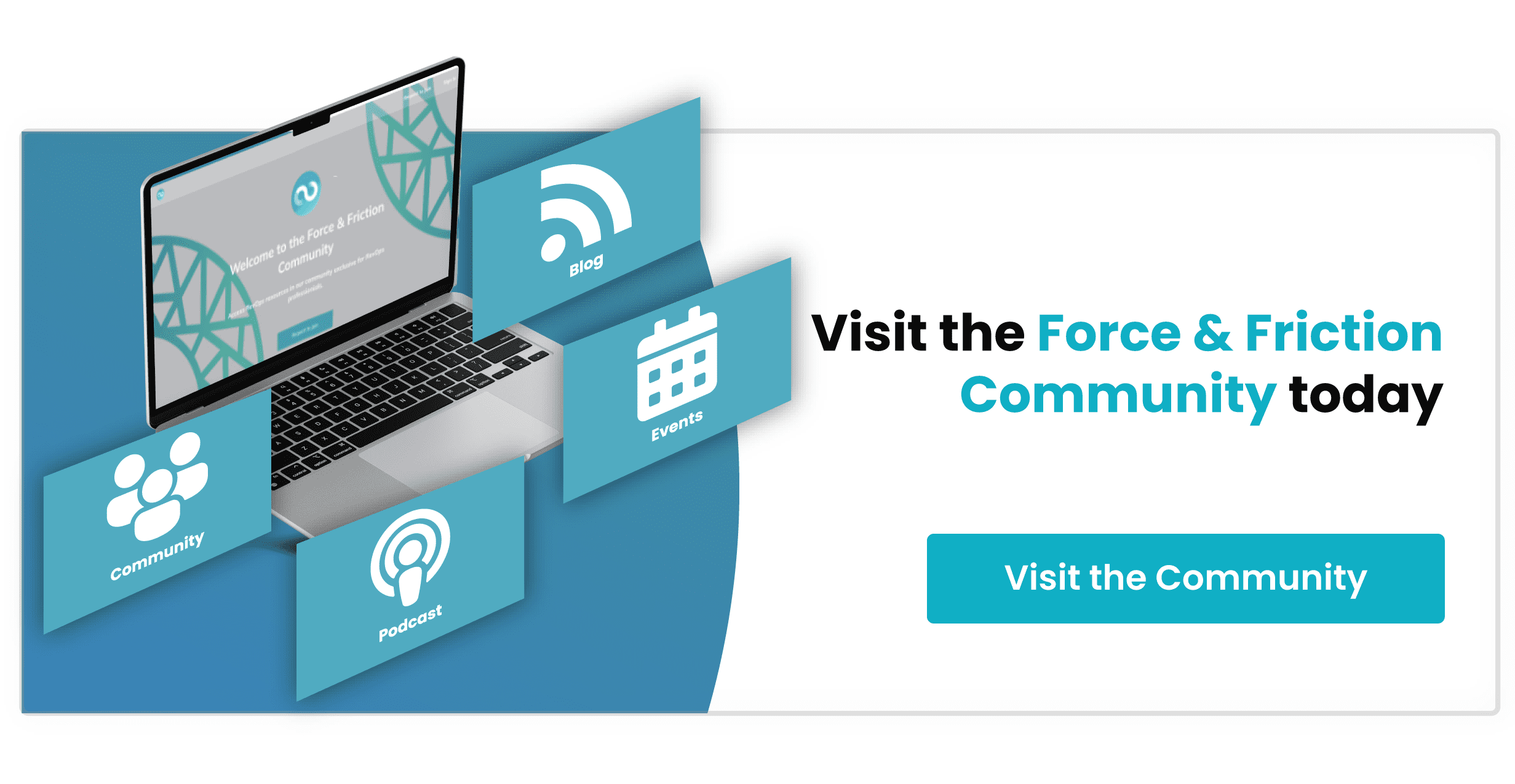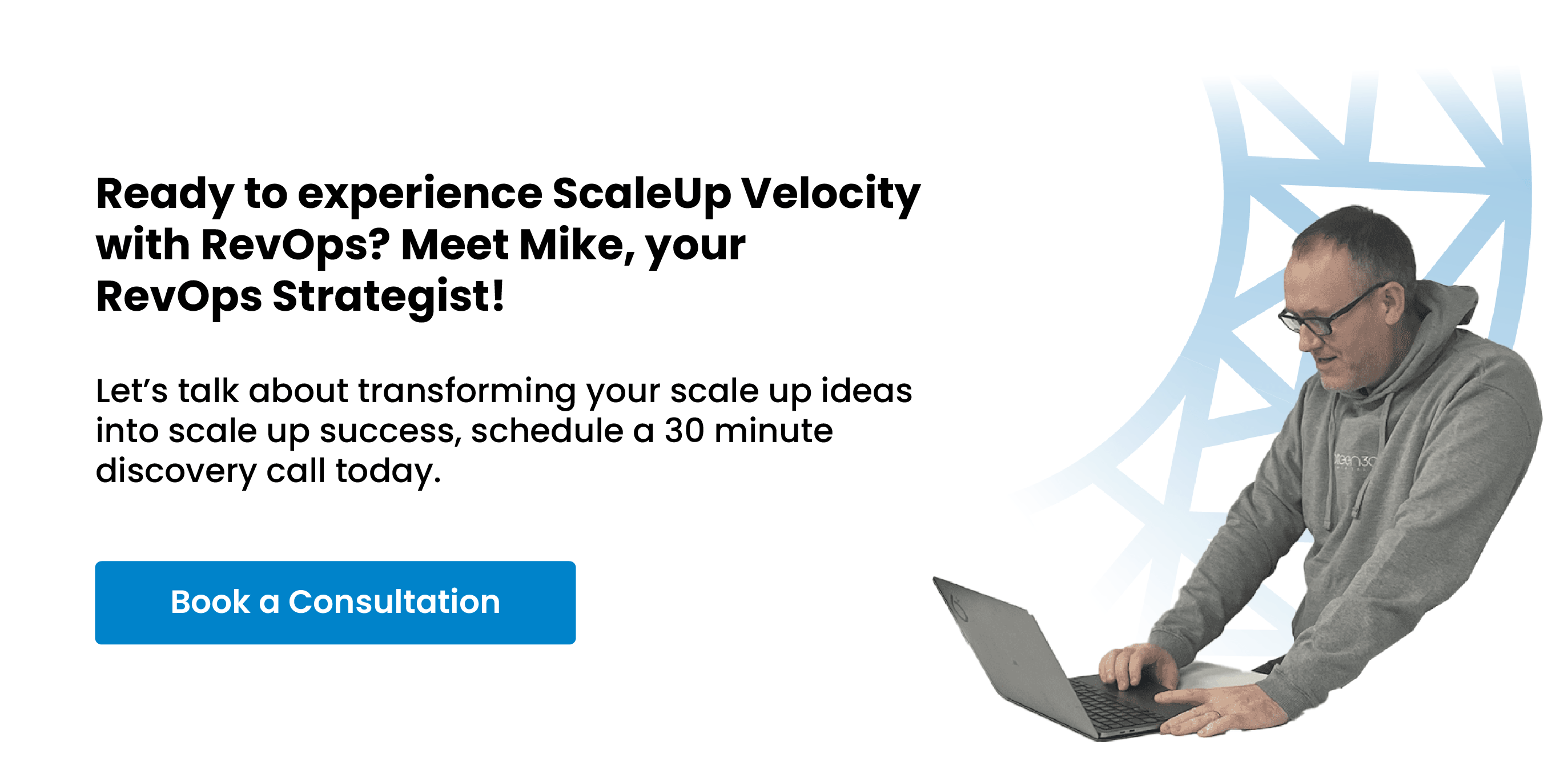
Revolutionize Your Revenue: The Power of a Business Model Review
| #RevOpsLife
RevOps, short for Revenue Operations, is a relatively new term or concept that has gained significant traction in recent years. In reality, RevOps has been around for decades, however not categorized, organized with such detail on revenue growth. Here at 6teen30 Digital, we have been implementing various forms of Revops solutions since 2016.
Simplified, RevOps refers to the alignment and optimization of sales, marketing, and customer success teams to drive revenue growth.
With the rise of customer-centric business models and the need for cross-functional collaboration, RevOps has become an essential component of any modern business strategy.
By breaking down traditional silos and creating a unified revenue-generating function, businesses can optimize their revenue-generating processes, increase customer satisfaction, and drive growth.
As part of creating a successful RevOps strategy, it is crucial to conduct a thorough business model review to identify areas of improvement and optimize the revenue-generating processes. In this #RevOpsLife article I discuss ten key components to help you review your business model that should be the foundation stone of your RevOps strategy and provide practical examples along the way.
What Is A Business Model Review?
It is a comprehensive evaluation of the revenue-generating processes of a company. It involves analyzing different components of your business model, such as revenue streams, customer segments, value proposition, sales process, marketing strategy, customer success, data analysis, technology stack, organizational structure, and key performance indicators (KPIs). All of these I have broken down into more detail later in this post.
The goal of a business model review is to identify areas of improvement, optimize revenue-generating processes, and align the organization towards common revenue goals.
Why You Need to Start With A Business Model Review:
As it is an essential component of a RevOps strategy, you simply cannot move straight to tactical implementation, nor finalize your Revops strategy without it, for several reasons.
1: It helps identify areas of improvement in the revenue-generating processes of the company
By thoroughly analyzing different components of the business model, companies can identify bottlenecks and inefficiencies that are preventing revenue growth. This allows the company to optimize its revenue-generating processes and increase revenue.
2: A business model review helps align the organization toward common revenue goals
By breaking down traditional silos and creating a unified revenue-generating function, companies can ensure that all departments are working towards the same revenue goals. This also creates a more collaborative and customer-centric culture, which can improve customer satisfaction and drive revenue growth.

3: A business model review helps companies stay competitive in a rapidly changing business environment
The business landscape is constantly evolving, and companies that fail to adapt risk being left behind. By conducting a business model review, companies can ensure that they are staying up to date with the latest industry trends and customer preferences. This allows them to remain competitive and drive revenue growth.
4: A business model review helps companies track the success of their RevOps strategy
By identifying relevant KPIs and tracking them over time, companies can measure the success of their RevOps strategy and make adjustments as needed. This ensures that the company is continually optimizing its revenue-generating processes and driving revenue growth.
Let’s explore each of these ten components in detail and provide practical examples for how you can optimize each component as part of your foundation's first step to creating your RevOps strategy.
I have also highlighted the roles within the business that are responsible for each component to provide a clear understanding of how each component fits within the overall RevOps strategy.
1: Revenue Streams:
The Chief Financial Officer (CFO) or Head of Revenue Operations (RevOps) is typically responsible for analyzing revenue streams and identifying areas for improvement to drive revenue growth.
In addition to identifying areas for improvement, your organization can also explore new revenue streams that can complement or replace existing streams. Some practical examples that we uncover in our RevOps strategic workshops include for example, how businesses can optimize their revenue streams:
-
Evaluate the pricing structure of different products or services to increase revenue per user.
-
Offer additional services or products to create recurring revenue streams.
-
Identify new markets or customer segments to expand revenue streams.
2: Customer Segments:
The Chief Marketing Officer (CMO) or Head of Marketing is typically responsible for identifying the target audience and determining how the business can cater to their specific needs and preferences.
Identifying your target audience is essential to creating an effective sales and marketing strategy. Your organization must evaluate its existing customer segments and determine if they align with overall revenue growth goals. Some practical examples that we uncover in our RevOps strategic workshops include for example,
-
Develop buyer personas to better understand the target audience's needs and preferences.
-
Build out Ideal Client Profiles for the organization types they work in
-
Evaluate customer retention rates to identify opportunities for increasing customer lifetime value.
-
Conduct market research to identify new customer segments, demographic and geographic assessments for markets to target.
3: Value Proposition:
The Chief Executive Officer (CEO) and / or Chief Product Officer (CPO) is typically responsible for evaluating the value proposition and ensuring that it aligns with the customer segments and revenue streams.
A value proposition is your unique selling proposition of a business that differentiates it from competitors. Optimizing your value proposition can help your organization better communicate its unique selling proposition to its customers and improve your messaging. Some practical examples that we uncover in our RevOps strategic workshops include for example,
-
Conduct customer research to identify pain points and differentiate the business from competitors
-
Refine messaging to better communicate the value proposition to customers.
-
Evaluate product or service offerings to ensure they align with the unique selling proposition.
4: Sales Process:
The Vice President of Sales or Director of Sales or CRO is typically responsible for reviewing the sales process, including lead generation, qualification, and closing, and identifying areas for improvement.
Optimizing your sales process is essential to increasing efficiency and driving revenue growth. By evaluating your lead generation, qualification, and closing processes, your organization can identify areas for improvement and optimize your sales process. Some practical examples that we uncover in our RevOps strategic workshops include for example,
-
Implement lead scoring to prioritize the most promising leads.
-
Evaluate the effectiveness of the sales team and identify areas for improvement.
-
Implement a sales enablement strategy to provide the sales team with the necessary resources to close deals.
5: Marketing Strategy:
The Chief Marketing Officer (CMO) or Head of Marketing is typically responsible for analyzing the marketing channels used to reach the target audience and determining if they are effective and efficient.
Optimizing your marketing strategy is essential to reaching the correct target audience and driving your revenue growth. By evaluating the effectiveness of different marketing channels, your organization can optimize its marketing spend and reach the target audience more effectively. Some practical examples that we uncover in our RevOps strategic workshops include for example,
-
Conduct market research to identify the most effective marketing channels for reaching the target audience.
-
Implement a content marketing strategy to attract and engage prospects.
-
Optimize the marketing budget to allocate resources to the most effective channels.
6: Customer Success:
The Head of Customer Success or Customer Success Manager / Head of Ops (COO) is typically responsible for evaluating the post-sales process, including onboarding, customer support, and retention, and identifying areas for improvement.
Optimizing your customer success process is essential to driving customer retention and revenue growth from existing customers. By evaluating the onboarding, customer support, and retention processes, your organization can identify areas for improvement and optimize the customer success process. Some practical examples that we uncover in our RevOps strategic workshops include for example,
-
Implement a customer feedback system to gather feedback and identify areas for improvement.
-
Provide ongoing training and support to ensure customers can fully utilize the product or service.
-
Implement a loyalty program to incentivize repeat business and increase customer retention.
7: Data Analysis:
The Chief Data Officer (CDO), Chief Information Officer (CIO) or Data Analyst is typically responsible for reviewing the data analytics tools and processes in place and identifying areas for improvement to help drive better decision-making.
Data analysis is essential to identifying areas for improvement and driving better decision-making. By analyzing data, your organization can identify trends and patterns that can inform the RevOps strategy and optimize revenue-generating processes. Some practical examples that we uncover in our RevOps strategic workshops include for example,
-
Implement data tracking and analytics tools to gather and analyze relevant data.
-
Evaluate the effectiveness of different marketing channels and lead sources to identify the most effective ones.
-
Use data to develop more accurate sales and revenue forecasts to guide decision-making.
8: Technology Stack:
The Chief Information Officer (CIO) or Head of IT is typically responsible for evaluating the technology tools used to support the sales and marketing process and determining if they are optimized to support business growth.
The technology stack refers to the set of tools and software used to support the sales and marketing process. Evaluating the technology stack is a critical component of your organization's business model review, as it can identify if the technology tools used are optimized to support business growth.
For example, a SaaS company may use a Customer Relationship Management (CRM) tool like HubSpot to manage sales leads and a marketing automation tool to manage marketing campaigns. By evaluating the effectiveness of these tools, your organization can determine if it is generating the desired results and if there are more efficient or effective alternatives available.
Some practical examples that we uncover in our RevOps strategic workshops include for example,
-
Evaluate the ROI of each tool in the technology stack to determine if the investment is generating the desired results.
-
Identify any redundant tools or overlapping functionalities to eliminate duplicative costs and streamline processes.
-
Explore new technology tools or services that may be better suited to support business growth or improve efficiency.
9. Organizational Structure:
The Chief Operating Officer (COO) or Head of Operations is typically responsible for assessing the organizational structure of the business and determining if it is optimized to support cross-functional collaboration and revenue growth.
Assessing the organizational structure of the business is another critical component of a business model review. The organizational structure can impact revenue growth by either facilitating or hindering cross-functional collaboration. For example, if the sales and marketing teams are siloed and do not communicate effectively, this can lead to missed opportunities and reduced revenue growth.
Some practical examples that we uncover in our RevOps strategic workshops include for example,
-
Evaluate the reporting lines and communication channels between departments to ensure that they are optimized for cross-functional collaboration.
-
Implement regular cross-functional meetings to encourage communication and collaboration between teams.
-
Ensure that teams have clear roles and responsibilities to avoid duplication of efforts and streamline processes.
10. Key Performance Indicators (KPIs):
The Chief Financial Officer (CFO) or Head of RevOps / RevOps Manager is typically responsible for identifying and tracking relevant KPIs to measure the success of the RevOps strategy and ensure alignment with overall business goals.
Identifying and tracking relevant KPIs is a critical component of a business model review and a successful RevOps strategy. KPIs are metrics that are used to measure the success of the RevOps strategy and ensure alignment with your overall business goals.
By tracking KPIs, businesses can identify areas of improvement and make data-driven decisions.
Some practical examples that we uncover in our RevOps strategic workshops include for example,
-
Identify and prioritize KPIs based on their impact on revenue growth and customer satisfaction.
-
Ensure that KPIs are specific, measurable, achievable, relevant, and time-bound (SMART) to ensure that they are meaningful and actionable.
-
Implement a system to track and report on KPIs regularly to ensure that the RevOps strategy is driving revenue growth and meeting business goals.
Conclusion
Conducting a business model review is an essential component of a RevOps strategy.
It helps you identify areas of improvement, align the organization towards common revenue goals, stay competitive, and track the success of the RevOps strategy.
By conducting a thorough business model review, your organization can optimize its revenue-generating processes, improve customer satisfaction, and drive revenue growth.
If you require any assistance, we operate through our RevOps GamePlan workshops, a fully managed business model review service, just schedule a consultation with me of one of our RevOps strategists who can review your current business model and provide expert guidance and recommendations on the best next steps for your organization.






%20-%20Teal.png?width=500&height=130&name=Force%20%26%20Friction%20-%20Branding%20-%20Logo%20(White)%20-%20Teal.png)